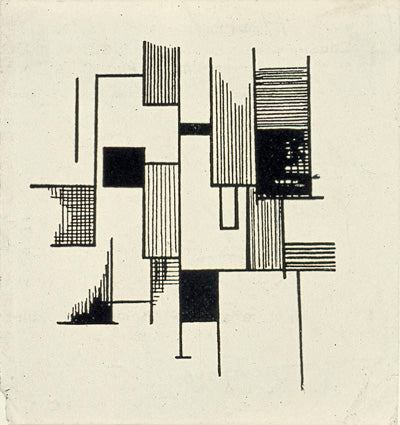Description
The work "Drawing - 1921" by Theo Van Doesburg is an emblematic piece that reflects the evolution of one of the most significant referents of Stijl's movement. This painting, executed in a transition period for the artist, is registered within a visual language that advocates for simplicity and geometric clarity, elements that are erected as fundamental principles of neoplasticism. When observing the work, we are faced with a composition that integrates straight lines, geometric shapes and a restricted color palette that evokes the ethos of the search for order and harmony characteristic of this artistic current.
The arrangement of the elements is meticulously balanced; Color blocks are perceived that, although they are firm and defined, interact in a dance of contrasts. The predominant tones, such as black, white and red, are used to emphasize both the structure and internal movement that generate each of the components of the work. This color use is not merely decorative; It acts as an expressive vehicle that communicates the desire of the artists of their time to transcend the purely visual and achieve a sense of universality.
In "Drawing - 1921", Van Doesburg seems to deviate from the figurative representation that occupied him in previous stages. The absence of explicit characters and narratives invites us to reflect on the work as an autonomous object that defies the traditional conventions of art. Here, the interactions between shapes and colors not only suggest an internal unit, but also promote an aesthetic experience that seeks to emotionally connect with the viewer, generating a dialogue in which each individual can freely interpret what he contemplates.
Theo Van Doesburg, in addition to being a pioneer of neoplasticism, also had an important as theoretical role, promoting the idea that visual construction could and should be understood in terms of an architecture of color and shape. "Drawing - 1921" thus becomes an eloquent example of this thought, where the formal elements are stripped of excessive ornamentation to reach a purest essence.
The Van Doesburg artistic horizon is also found in dialogue with its contemporaries, such as Piet Mondrian and other members of the Stijl movement, who shared the vision of an art that should be a reflection of modern life and the technological advances of their time. However, in this work, Van Doesburg prints his own voice through an approach he experiences with the disposition of the color blocks and the dynamics created by them, something that distinguishes it within the context of neoplasticism.
In sum, "Drawing - 1921" is a manifestation of the aesthetic revolution that marked the beginning of the twentieth century, articulating a search for balance and beauty from the simplification and geometry of the visual space. The work is not only a piece of art, but a testimony of a crucial moment in the history of modern art, where formal and conceptual issues were explored with a rigor and creativity that continue to inspire generations of artists and critics. Through this work, Theo Van Doesburg invites us not only to see, but to conceptualize art in its most essential form.
KUADROS ©, a famous paint on your wall.
Hand-made oil painting reproductions, with the quality of professional artists and the distinctive seal of KUADROS ©.
Art reproduction service with satisfaction guarantee. If you are not completely satisfied with the replica of your painting, we refund your money 100%.

